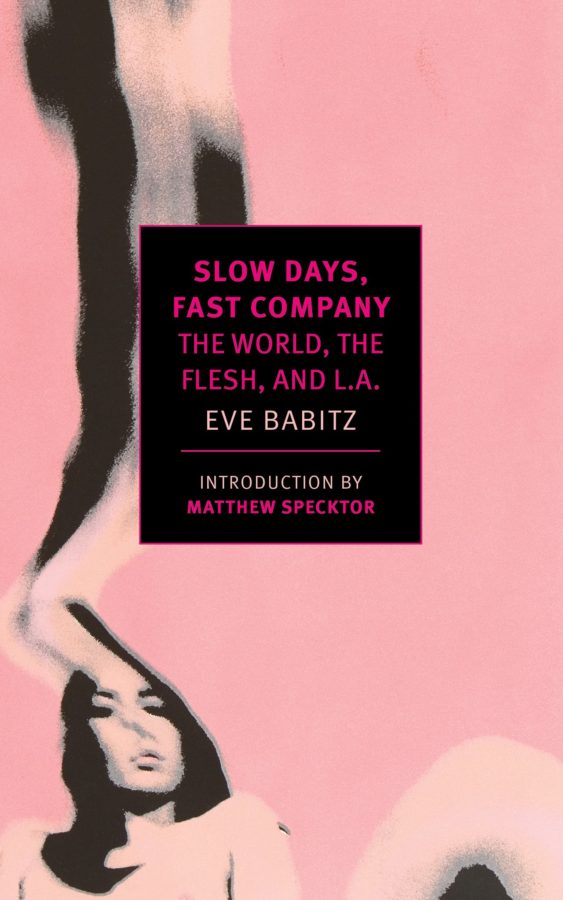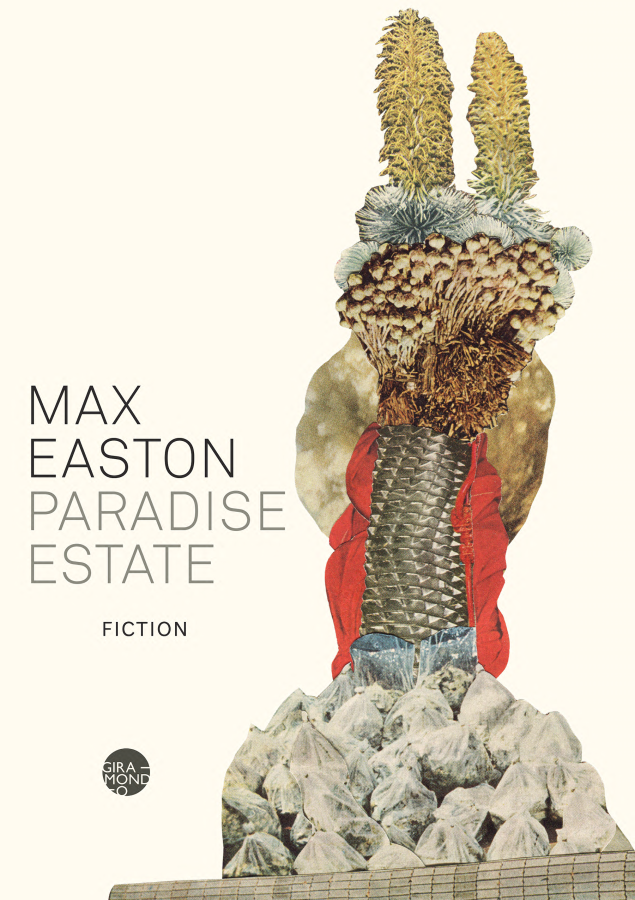After decades of out-of-print obscurity, Eve Babitz is enjoying a second wave of literary stardom. Several of her novels and short stories have recently been republished, becoming notorious all over again for their portraits of the reckless demimonde of Los Angeles in the 1960s and 1970s. These include Eve’s Hollywood (1972), Slow Days, Fast Company (1974), Sex and Rage (1979), L.A. Woman (1982) and Black Swans (1993). And the renewed enthusiasm for her work only continues to intensify. This year sees the publication of I Used to Be Charming, which brings together her previously uncollected non-fiction pieces, and Hollywood’s Eve, a new biography on Babitz written by Lili Anouk.
Babitz is supremely interested in the pursuit of pleasure: her characters are constantly and perilously drawn to the temptations of beauty, sex, drugs, and fame. Then there is the attractive nature of her prose, riddled with brilliant aphorisms and vivid descriptions of sensual delight. But this evocation of glamour should not distract from the radical critique of gender and sexuality that is contained within her writing.
The typical Babitz protagonist is a passionate woman who seeks artistic and sexual fulfillment in the era of women’s liberation. These women often remark upon the fact that they must improvise their explorations without the guidance of historical precedents. For example, the narrator of the titular story in Black Swans harbours doubts about her bourgeoning literary career. Will becoming a writer endanger her sexual allure? ‘Joan Didion scared the hell out most of the men that I knew,’ she confides, ‘Of course, there was always Colette, but then she was French…’ The reference to Colette is particularly resonant given her pioneering representation of queer sexuality. Reading Babitz, I was immediately struck by the sheer preponderance of queer characters that appear in her fiction. They are probably most prominently featured in the novel Slow Days, Fast Company, but they pop up almost everywhere in the author’s heady and meandering visions of Californian life.
One of her major themes is the unstable character of desire: the unpredictable course of its ebb and flow; its compulsion to transgress the restraints of convention; its challenge to the reductive categories that have been devised for our personal relations. It is in this context that queer subjects tend to figure in Babitz’s work. They are most often introduced as friends of the exuberant women who are placed at the centre of her narratives. However, it might be more accurate to say that the effect of these relationships is to blur the boundaries of friendship, for what begins as a fierce affection between the characters can very readily morph into carnal desire or malevolence. Worse still, it might simply dissipate into thin air.
Babitz’s protagonists cling to the idea that a glorious friendship will help them survive the vicissitudes of life. For instance, the narrator of Slow Days, Fast Company is another woman writer who grapples with the arrival of her newfound success. After a narrow escape from the perils of addiction, she describes friendship as her one reliable source of consolation:
I did not become famous but I got near enough to smell the stench of success. It smelt like burnt cloth and rancid gardenias, and I realized that the truly awful thing about success is that it’s held up all those years as the thing that would make everything all right. And the only thing that makes things even slightly bearable is a friend who knows what you’re talking about.
This is the dash of hope that glimmers through the scepticism of so many of Babitz’s women. They are decidedly immune to the attractions of marriage, children and a professional career. But for all their wry cynicism, they remain susceptible to the great romance of friendship.
The trouble is that friendship turns out to be anything but reliable or straightforward, as the nameless protagonist of Slow Days, Fast Company is soon to discover. About half way through the novel, she makes an earnest attempt to be ‘just friends’ with William, a man-about-town whose persistent advances she rejects on account of his tiresome sense of humour. ‘Any man who cannot resist a pun will never lie up-pun me,’ she demurs. By the next page, the two are already falling in bed together, and to make things more complicated, they are joined by a devastatingly beautiful actress. Their friendship quickly dissolves when William proceeds to court the actress, who is in fact the protagonist’s true object of desire. After this dismal turn of events, she finds comfort in her friendship with Shawn, a charismatic designer who nurses his own heartbreak after being abandoned by his millionaire boyfriend. It does not take long for another threesome to ensue, this time with a blonde and bewildered Scandinavian, which prompts their friendship to progress into another complicated romance.
This intricate plot is emblematic of the twists and turns that recur throughout Babitz’s entire oeuvre. It is sometimes difficult to classify the ties of the characters, so prone are they sudden and profound alterations. Moreover, even those relationships that might appear to remain platonic are described in terms so ardently sensual that they run close to the realm of the erotic. Consider another passage in Slow Days, Fast Company, wherein the narrator arrives at a fashionable party and is immediately enraptured by the presence of her friend Mary:
She was dressed in flowing translucent lilac cotton with peach slippers; everything floated when she moved. She smelled like lilacs. She had lilac mascara around her eyes and lilac eye shadow that faded into her temples. Her lips were peach…
Her infatuation with Mary does not lead to a sexual liaison, but her admiration is so indulgent that the possibility never seems remote. Such ambiguities are only compounded by the elastic concept of sexuality that we come to observe in the social world of these characters. Given the infinite variety of their entanglements, the reader can never be sure who might be attracted to whom; we cannot presume that any of the characters are straight, and even those who are nominally identified as gay are often closer to bisexual or pansexual in the breadth of their sexual activities.
There are refreshing insights that emerge from the porous nature of these personal affairs. In tracing their movements, Babitz escapes some of the stale preconceptions that are imposed upon queer culture. For instance, it would be wrong to resort to a commonplace like ‘fag hag’ to describe the type of characters that she brings to the page. ‘Fag hag’ is a term that comes with its own controversies; it is often interpreted as an epithet for the women who befriend homosexual men, one which implies the undesirable condition of their bodies. Some women are inclined to embrace the appellation in a spirit of ironic jest, but we never see that gesture in Babitz’s fiction. For one thing, her magnificent heroines are too aware of their own charm to even entertain this mode of self-deprecation. Furthermore, their friendships with men cannot be reduced to the rigid categories of identity that such labels invoke; as we have observed, several of these characters are only tentative in their identifications with any particular sexual orientation.
Contemporary queer activism often strives to recognise the fluidity of sexuality through sharpened attention to its terminologies. Babitz’s literature is situated outside this tradition. In her writing, characters freely experiment without serious qualms over language. If a term no longer applies, it is not necessarily replaced with a more accurate one. Rather, the narration suggests a worldly scepticism about the reliability of the term in the first place. This position is expressed when the protagonist of Slow Times, Fast Company derides a vacuous socialite at a party in Emerald Bay:
She was identical to all the other women in the room…She had the same untouchable hair, the same bright-pink lipstick, the same terrible vague look around her eyes that got more confused when she was told that not only was I Shawn’s girlfriend (she knew Shawn was gay, and how could he be with me if he was gay?) but I was also a writer.
Here the resolve to fret over precise categorisations is linked to the dull conformities of bourgeois parochialism. But this critique should not be confused with a careless disregard for preferred identifications. On the contrary, the attitude that Babitz celebrates is one that graciously accepts incipient options of character before they are even named or determined.
This broadminded perspective is further evinced in her richly textured and varied imagination of queer life. Time and again, she casts her characters in scenarios that move beyond the predictable arcs that queer subjects are routinely prescribed. Some examples: Sex and Rage turns on the turbulent friendship between Jacaranda, a spirited but naïve young woman, and Max, the older sophisticate who captivates her with his elegance (‘She saw Oscar Wilde in every move he made’) only to torment her with his insouciant menace and ‘detached sparkle’. The perennially heartbroken narrator of the short story ‘Free Tibet’ comes to the despairing realisation that her preoccupation with her own romantic crises has left her too distracted to properly care for her beloved companion who perishes from AIDS. ‘Weird August’ finds a pair of middle-aged libertines contemplating their chances at aging gracefully in the wake of their hedonistic youths. It is to Babitz’s credit that these finely rendered narratives capture so many of the pleasures and predicaments of queer existence without recourse to simplistic clichés. (The same cannot always be said about Joan Didion, the contemporary with whom she is most often compared. Gary Indiana, for one, has reproached Didion for scattering her fiction with portraits of ‘shrieking’ and ‘suicidal’ homosexuals ‘for spice, like pineapple rings on a Christmas ham’.)
One of the vexing problems that has followed Babitz’s critical reception concerns the question of self-revelation. Her writing rarely presents itself as autobiographical, although there are notable exceptions in Eve’s Hollywood and Two by Two (1999). Nevertheless, critics often proceed on the presumption that her writing reflects on the raw material of her lived experience. (In an interview with Newsweek last year, Babitz was sure to point out the prevalence of this mistake.) Stephanie Danler’s foreword to the recent reissue of Black Swans, for example, draws no distinction between the author and the characters she writes about.
Why have these carefully crafted fictions proved such a temptation to critics seeking biographical insight? To begin with, there is a significant overlap between the popular imagination of Babitz’s life and the louche milieu that her literature describes. Her books include allusions to real-life figures who are known to be some of her most famous paramours, such as Jim Morrison of The Doors. But the inclination to interpret this material as a vessel for personal memory can also be attributed to the intimate register of the storytelling. The narration often addresses the reader in keenly affectionate and even amorous terms. Slow Days, Fast Company, for example, is a kind of epistolary novel, in which the dramatic action unfolds in a series of vignettes that are prefaced with letters to an unnamed lover. ‘I have to be extremely funny and wonderful around him just to get his attention at all and it’s a shame to let it all go for one person’, confides the narrator, and she accomplishes her goal with panache.
Babitz’s prose is both jocular and contemplative, sharply mordant and thrillingly effervescent. This tone positions the reader to assume a familiar relation to the characters we encounter on the page; it is as though we are receiving their confidences in the process of an intimate conversation. Another reason these characters are so tangibly perceived by their audience is the sheer force of their originality, and no doubt their modern approach to the multiplicities of sexual desire is a part of what makes them so memorable. After all, literary culture has played an important role in the public recognition of sexual minorities. This idea is something that Babitz’s own narratives seem to reflect — recall that when Jacaranda begins to notice Max’s queer identity, her first instinct is to compare him to Oscar Wilde. Now, the author’s stories and their associated legends offer their own models for understanding difference.
Meanwhile, the cult of admiration that surrounds her continues to expand. On the heels of the republished books and the new biography, Hulu is reportedly developing a television serial that takes its inspiration from several of her novels. The world-weary narrator of her short story ‘Self-Enchanted City’ informs us that, ‘We live in a world where whoever sedates us with the most glamour and captures our imaginations with the greatest intensity becomes history.’ Whether she likes it or not, this is precisely what Babitz has become.





